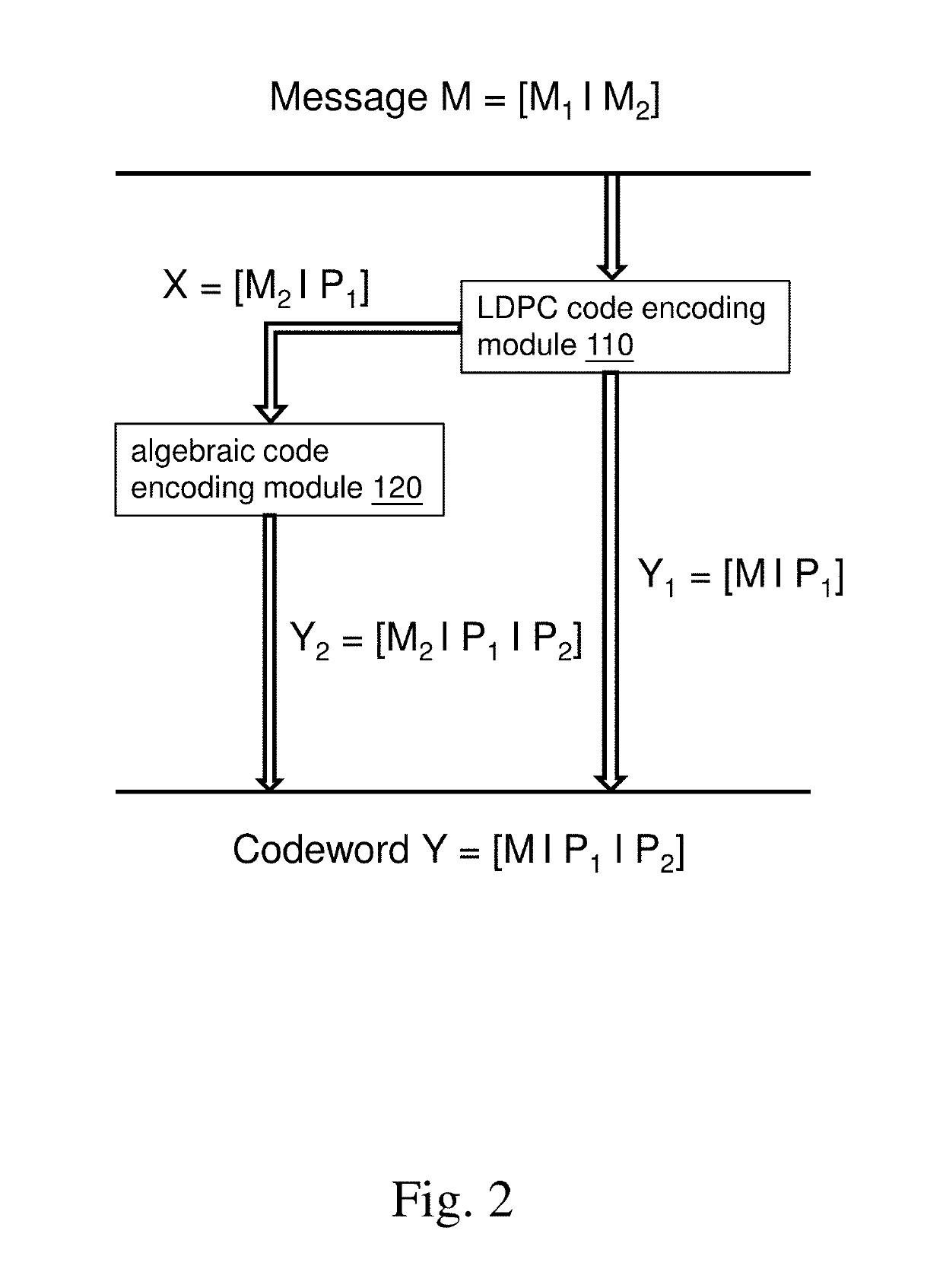Partial concatenated coding system using algebraic code and LDPC code
- Summary
- Abstract
- Description
- Claims
- Application Information
AI Technical Summary
Benefits of technology
Problems solved by technology
Method used
Image
Examples
Embodiment Construction
[0020]The present invention will now be described more specifically with reference to the following embodiments.
[0021]Please refer to FIG. 1 to FIG. 4. An embodiment of a partial concatenated coding system 10 which uses an algebraic code and LDPC code according to the present invention is disclosed. FIG. 1 is a schematic diagram of the partial concatenated coding system 10, FIG. 2 illustrates how a message is encoded, FIG. 3 shows the structure of a codeword, and FIG. 4 is a flow chart of operation of the partial concatenated coding system 10. The partial concatenated coding system 10 includes an ECC encoder 100, a received codeword monitoring module 300 and an ECC decoder 200 as enclosed by long dash frame in FIG. 1. These elements are hardware and can be mounted in separate devices, e.g. the ECC encoder 100 in a transmitter and the received codeword monitoring module 300 and the ECC decoder 200 in a receiver. Functions of the modules and operation of the partial concatenated codin...
PUM
 Login to View More
Login to View More Abstract
Description
Claims
Application Information
 Login to View More
Login to View More - R&D
- Intellectual Property
- Life Sciences
- Materials
- Tech Scout
- Unparalleled Data Quality
- Higher Quality Content
- 60% Fewer Hallucinations
Browse by: Latest US Patents, China's latest patents, Technical Efficacy Thesaurus, Application Domain, Technology Topic, Popular Technical Reports.
© 2025 PatSnap. All rights reserved.Legal|Privacy policy|Modern Slavery Act Transparency Statement|Sitemap|About US| Contact US: help@patsnap.com



